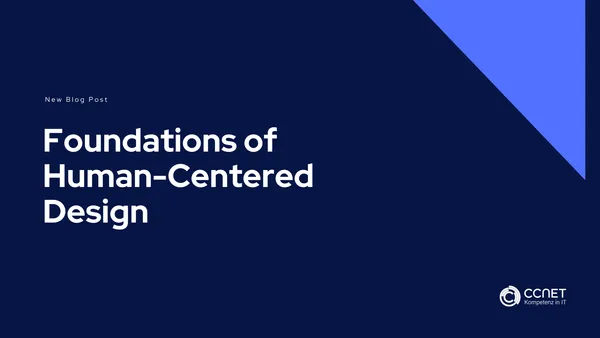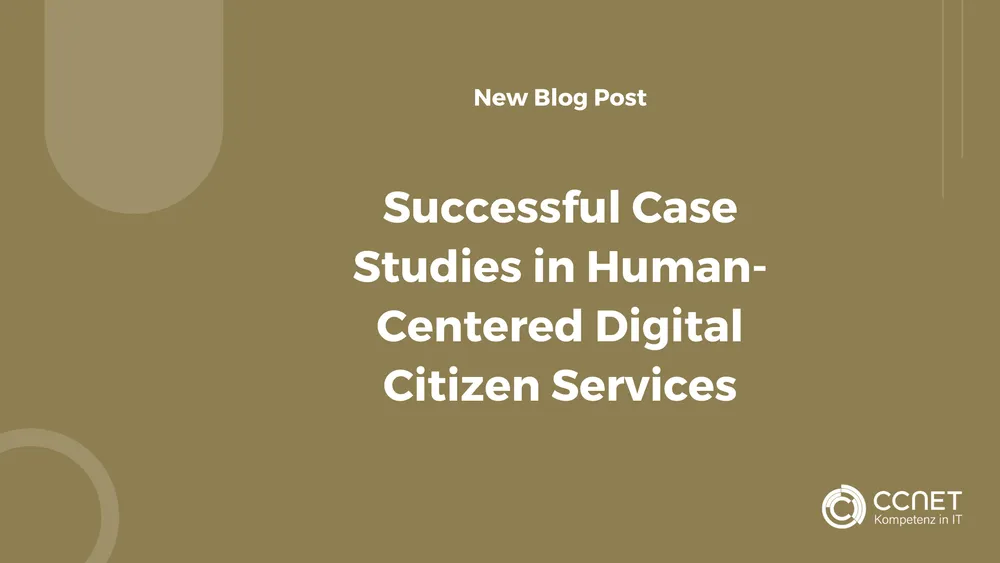
CCNet
Jun 3, 2024 • 3 min read

Foundations of Human-Centered Design
The world is increasingly becoming digital, and public services are no exception. However, the challenge is to create digital services that are not only efficient but also centered around the needs of the people who use them. This is where Human-Centered Design (HCD) comes into play. This blog post explores the fundamental concepts of HCD with a focus on digital communication and citizen services, aiming to create a basic understanding of how HCD can improve usability and accessibility.
Further information can be found here: solutions
What is Human-Centered Design?
Human-Centered Design is a design approach that prioritizes the needs and experiences of users. It involves users in every stage of the design process, from problem identification to solution implementation. This approach has gained prominence due to its effectiveness in creating digital services that are not only functional but also intuitive and enjoyable to use.
According to the International Organization for Standardization (ISO), HCD aims to enhance human-system interaction by considering ergonomic principles. This means designing digital services that are not only efficient and effective but also contribute to the well-being and satisfaction of users during their interactions.
The Importance of Human-Centered Design for Public Services
When it comes to public services, HCD is especially crucial. These services are designed for a broad audience, including people of all ages, backgrounds, and abilities. Therefore, they must be accessible, usable, and inclusive. A failure to design with these principles can lead to services that are difficult to use, excluding large segments of the population.
Public services that incorporate HCD tend to have higher user satisfaction, greater accessibility, and increased adoption rates. This is because the design process takes into account the diverse needs and experiences of users, resulting in services that are more intuitive and easier to navigate.
Key Principles of Human-Centered Design
The following principles form the foundation of HCD:
-
Understanding the User's Context: To design effective digital services, it's crucial to understand the environment in which users operate. This involves conducting field research, observations, and consultations with experts to gather insights into the current scenario and problem space.
-
Involving Users Throughout the Design Process: HCD is an iterative process that involves users at every stage. This includes co-creation, where users help generate ideas and test prototypes. The feedback from these interactions guides the design process.
-
Creating Prototypes and Testing Early: One of the strengths of HCD is its emphasis on prototyping. Early prototypes allow designers to test ideas and gather user feedback, enabling them to make adjustments before final implementation.
-
Emphasizing Usability and Accessibility: HCD aims to create services that are easy to use and accessible to everyone. This includes designing for diverse user groups and considering factors such as age, disability, and cultural background.
-
Iterative Testing and Improvement: The design process is cyclic, with each iteration bringing improvements based on user feedback. This approach ensures that the final product meets the needs of its users and can adapt to changing requirements.
Application of Human-Centered Design in Digital Services
Human-Centered Design can be applied in various ways to improve digital services for citizens:
- Ethnographic Studies: By observing users in their environment, designers can gain valuable insights into their needs and behaviors. This information helps create more user-friendly services.
- Persona Development: Personas are fictional characters that represent different user groups. Creating personas allows designers to consider a wide range of users during the design process.
- Prototyping and User Testing: Building prototypes and conducting usability tests with real users allows designers to identify and address potential issues early in the design process.
Conclusion
Human-Centered Design is a powerful approach for creating digital services that are accessible, usable, and effective. By involving users at every stage of the design process, HCD ensures that digital communication and citizen services are designed with real people in mind. Foundations are crucial in this approach, providing the essential groundwork and guiding principles that ensure the success and sustainability of HCD initiatives. As we continue to rely on digital services for various aspects of our lives, adopting HCD principles and establishing strong foundations is key to building a more inclusive and user-friendly digital world.


